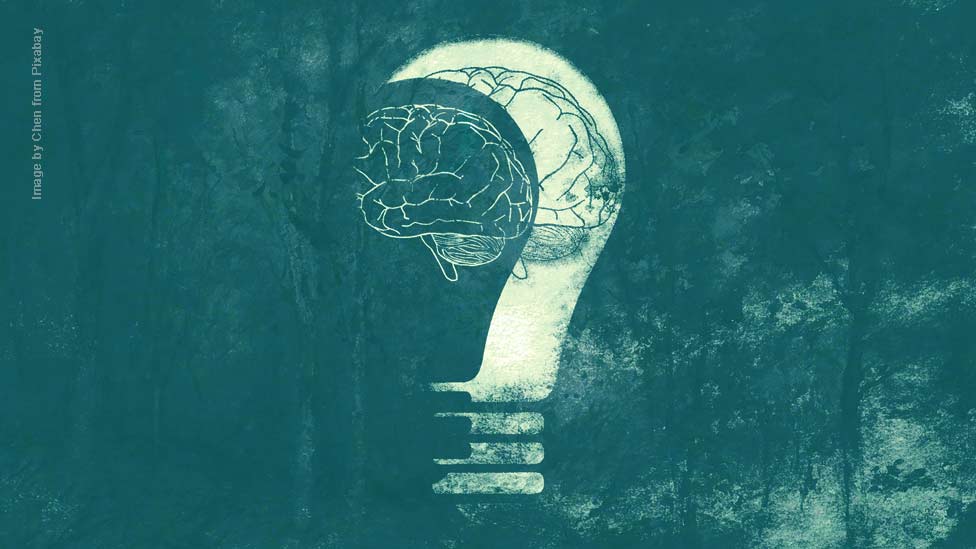In Conversation: Reflections on Trauma and Autism
In Conversation: Reflections on Trauma and Autism
Ahead of the UKPTS 2024 Annual Conference on 19 January 2024, we are featuring invited guest posts on our conference topic ‘Trauma Care: Towards an Integrated Approach’. Matt Williams and Sophie Darroch, both trainee Clinical Psychologists at the University of Exeter reflect in conversation on their differing professional experiences in autism services, and the overlaps with an awareness of trauma and traumatic experience.

Matt: I think we both have a background in working in autism services, with a lot of similarities but also some differences. Before beginning my clinical training, I worked in, and then went on to manage, a mental health care home, where we had a number of residents who had autism diagnoses. After that, I went on to work in an Adult Autism Assessment and Post Diagnostic Support team. I also have a family member who’s autistic, so I had a bit of an idea about autism before starting on this current professional path.
Sophie: So, my experience is more child focused. I’ve previously had a year’s placement in a neurodevelopmental team, and there was a lot of work around autism diagnosis, including facilitating school observations and observing autism assessments. After that, I worked in two schools and volunteered in charities for autistic children. I have also worked in an older adult’s inpatient ward, which was helpful in advancing my understanding of trauma in particular and its presentations. Working within these settings is where I began to really notice the potential overlaps between autism and trauma.
Matt: We realised quite quickly once we started chatting that we had similar experiences with autism, just in different settings. I think adults were a bit different because, one of the things that I hadn’t really put too much thought into was this idea of a ‘missed generation’ of autistic people.1 So, I saw a lot of people coming for assessments who were autistic but basically didn’t realise. It was quite common for them to start to question whether they might be autistic when they became parents. Because the school might pick up on their kid being autistic, then during the developmental history part of the assessment the parent might think “oh, I used to do all this kind of stuff” or “I still do a bunch of this stuff. Maybe I want to get tested as well.”
Sophie: That’s really interesting. I wonder if it has to do with an increased public awareness around the diagnosis. I know in the last 20 years autism diagnoses have gone up by 787%2 and there’s been more funding put into autism diagnosis, especially adult services.2 Also, I guess nowadays autism is portrayed more in the media; particularly there has been a rise of talk on social media about the different presentations of autism, such as on TikTok and Instagram. I wonder whether people might then recognise themselves, and that exposure might also create a sense of normality and acceptance.
Matt: We saw referrals to the adult service boom after the Paddy and Christine McGuinness documentary a few years ago.
Sophie: Oh, that’s interesting.
The nuance and overlap [between trauma and autism] can make the diagnostic process challenging at both an individual level and in terms of services.
Matt: One of the things on our minds during that referrals boom and the rate of increased recognition and diagnosis, was how we considered risk and how autistic people might respond to self-report measures. While working in the adult service, I looked into some research by Sarah Cassidy that found autistic people didn’t tend to interpret suicidality questionnaires the same way as neurotypical people.3 So, they might struggle if the question has two prongs, like “have you ever attempted or considered suicide” and because of the “attempted or considered” they weren’t sure what to answer in relation to. Or with the Likert scales of like “never”, “sometimes”, “rarely”, they struggled with what counts as “rarely” and so on. So, it led to responses that weren’t reflective of the experience of autistic people. Also, sometimes questions didn’t bring the same things to mind for autistic people as it would for neurotypical people.3 Another study also showed that autistic traits themselves, regardless of diagnosis, may be a risk factor for suicide.4 So, people might not meet diagnostic thresholds, but if they’ve got more autistic traits then there’s potentially an increased risk of suicide, even when controlling for the usual demographics.
Sophie: That’s a really important point and shows how clinicians need to be aware of how subjective language is, and to explore individuals’ definitions with curiosity.
Matt: The increased public awareness that you mentioned earlier is interesting as well. Previously, I think more parents didn’t want to go ahead with assessment because they didn’t want to label their kid – they thought they would be putting them in a box and impact their life negatively. But then sadly we saw people who went on to talk as adults about bad school experiences, with bullying and things like that, and those experiences weren’t really able to be contextualised. Even if an autism diagnosis wasn’t as accepted and generally understood by others at the time, some said that if they had understood why they felt so different and struggled to fit in, it would have been helpful for them.
Sophie: Yes, I think it’s really important to consider individual’s experiences of obtaining a diagnosis. Even nowadays, the decision to seek a diagnosis can be difficult for carers; there are positives, but there are still challenges. Carers’ can have a spectrum of mixed responses ranging from relief to grief.5 Carers may need to alter their parenting style to best support their child and potentially change their expectations of their child’s life.5 But actually, taking this processing time can get you “behind” so to speak in other processes to obtain support, which can add even more difficulty and pressure. Occasionally it can cause conflicts within parents’ relationships, which can also bring challenges to the parent-child environment. I think post-diagnostic support groups can be really helpful to begin to process and explore these emotions.
In my experience, lots of the interventions and techniques for autism and trauma do overlap…but there are differences.
Matt: It just shows how much impact the diagnosis itself can have, how that can impact family dynamics, and how that might lead to a more traumatic upbringing potentially if your parents respond to you in different ways. Especially if that comes on top of maybe being bullied at school for not fitting in.
I was aware of the overlap between autism and trauma but got a greater appreciation for it when I learned about the Coventry grid,6 which tries to distinguish between attachment disorders and autism, and shows how many of the behaviours and the presentation in general overlaps. That nuance and overlap, I think, can make the diagnostic process challenging at both an individual level and in terms of services.
Sophie: And going back to what we had said about the impact of diagnoses and labels, maybe how an autism diagnosis is received compared to a developmental trauma diagnosis. When I worked in a specialist school, every child had a diagnosis of autism. However, once we spent time building therapeutic relationships, around only a tenth of the children were autistic. Most children’s presentations seemed to be due to trauma. So, for example, when lots of the children started, they didn’t make eye contact. After intensive relationship building and working therapeutically though, they started making eye contact. Or another example, children initially had conversations on their preferred topic as it might have felt safer, but then, through building secure relationships, children would start to have broader conversations. The change in presentation made me think it was trauma, not autism.
Matt: I haven’t worked with as many kids as you, but I’ve experienced similar. I think of one case where they had an autism diagnosis but upon meeting them, I wasn’t the only one in the team who thought that an autism diagnosis might not be appropriate. It made a lot more sense, given their history, for their presentation to have been a result of developmental trauma.
It just makes me think about the politics of diagnosis, like you said, how it’s maybe easier for an autism diagnosis rather than trauma to be accepted by parents, carers, and others. The ICD-11 even talks about the boundary autism shares with other disorders and talks about the difficulty in distinguishing between reactive attachment disorder and autism – autistic traits should decrease when the person is in a nurturing environment like you just described with the kids in your school.7
Sophie: Yes, and crucially the impact of this diagnosis on the intervention and support that’s then offered. In my experience, lots of the interventions and techniques for autism and trauma do overlap, for example, using visual aids and having consistent boundaries. But there are differences. For instance, for a child with trauma, their previous experiences can affect their behaviour, particularly in relation to feelings of shame. This might need a slightly different response compared to an autistic child who is feeling unsafe due to inconsistent boundaries.
Also, it’s worth mentioning that the same strategies can be effective for different reasons. For example, grounding strategies may be used for an autistic person who is experiencing sensory overload, whereas if someone’s reliving past trauma, grounding strategies would be used to return someone’s awareness to the present moment and show them they are safe. The goal might be different too. Interventions like these can support trauma recovery, whereas autism is a lifelong condition and interventions support someone to live a meaningful life. So, it is important to think about the differences.
Matt: Yes, and the importance of considering the whole life course where you can and how these experiences and needs may overlap.
I think the system is taking steps forward in using an integrated approach, and I hope this progress continues.
Sophie: I think it’s also worth noting that autistic people can be more vulnerable and so more likely to experience traumatic events. Similarly, they may find certain experiences to be more traumatic than the neurotypical population. Therefore, they might be more vulnerable to developing or reporting symptoms of PTSD.8 Indeed, factors associated with autism such as rumination or heightened focus on detail may also contribute to the development and maintenance of PTSD symptoms and other post-traumatic disorders.9 So, it’s important to not discount that someone might have a dual presentation.
Matt: I think that just shows the importance of formulation driven work, doesn’t it? Because the diagnostic label doesn’t necessarily matter as much then. Rather, it’s a position of ‘OK, what are you struggling with and how would be best to work with you on that?’ and then going from there. Then the label or labels maybe inform the treatment a bit less.
Sophie: Yeah, formulation driven work is so important. I guess a diagnosis can validate someone’s experiences, as we’ve discussed, but also, the current difficulty is that a diagnosis allows access to specific interventions and differing pathways.
Matt: Yeah definitely. It’s a helpful heuristic and useful for accessing support, and I think the best support comes with both a diagnosis and good formulation, again going back to that that whole person, whole life course, integrated approach.
Sophie: I think the system is taking steps forward in using an integrated approach, and I hope this progress continues so individuals and their families can be supported in the way they want.
Matt: Absolutely, and I think in our role as trainee clinical psychologists we’re in a good position to question current practices and highlight new ideas with a sense of curiosity, which might be harder when we’ve been in a service for a longer period of time.
Sophie: Definitely, though as qualified clinical psychologists and potential service leads in the future, we may hopefully have more influence.
Matt: Yeah, I think it will be important to bring those lessons we’ve learned through training, and before, with us into those positions of power, and always be open to new ideas and how best practice can change with time.
Sophie Darroch is available to connect on LinkedIn
Click for tickets and more details of the UKPTS 2024 Annual Conference, ‘Trauma Care: Towards an Integrated Approach’.
The one-day conference will take place on 19 January 2024 at Wolfson College, Oxford will feature speakers on a range of topics including psychedelics, resilience, functional neurological disorders and more.
References
- Lai, M.-C. & Baron-Cohen, S. Identifying the lost generation of adults with autism spectrum conditions. Lancet Psychiatry 2, 1013–1027 (2015).
- Cassidy, S. A. et al. Measurement Properties of the Suicidal Behaviour Questionnaire-Revised in Autistic Adults. J. Autism Dev. Disord. 50, 3477–3488 (2020).
- Russell, G. et al. Time trends in autism diagnosis over 20 years: a UK population‐based cohort study. J. Child Psychol. Psychiatry 63, 674–682 (2022).
- Cassidy, S., Bradley, L., Shaw, R. & Baron-Cohen, S. Risk markers for suicidality in autistic adults. Mol. Autism 9, 42 (2018).
- Rasmussen, P. S., Pedersen, I. K. & Pagsberg, A. K. Biographical disruption or cohesion?: How parents deal with their child’s autism diagnosis. Soc. Sci. Med. 244, 112673 (2020).
- Moran, H. Clinical observations of the differences between children on the autism spectrum and those with attachment problems: The Coventry Grid. Good Autism Pract. GAP 11, 46–59 (2010).
- World Health Organization (WHO). International Classification of Diseases, Eleventh Revision (ICD-11). (2019).
- Rumball, F., Happé, F. & Grey, N. Experience of Trauma and PTSD Symptoms in Autistic Adults: Risk of PTSD Development Following DSM‐5 and Non‐DSM‐5 Traumatic Life Events. Autism Res. 13, 2122–2132 (2020).
- Haruvi-Lamdan, N., Horesh, D. & Golan, O. PTSD and autism spectrum disorder: Co-morbidity, gaps in research, and potential shared mechanisms. Psychol. Trauma Theory Res. Pract. Policy 10, 290–299 (2018).



